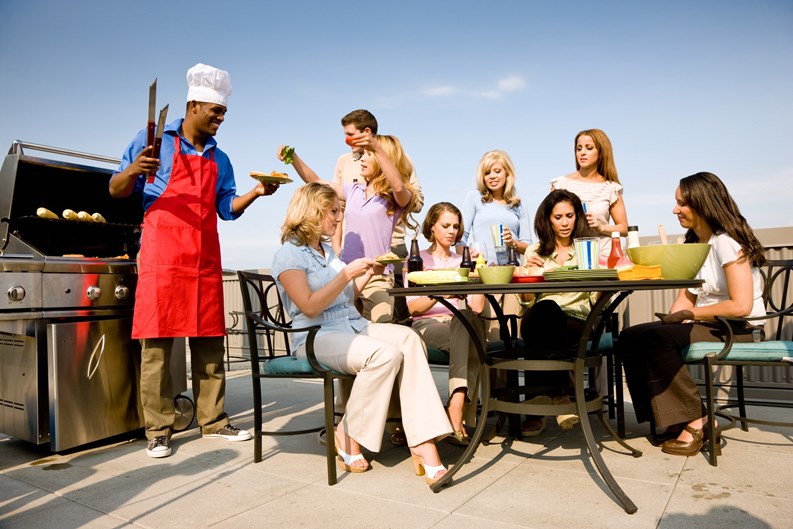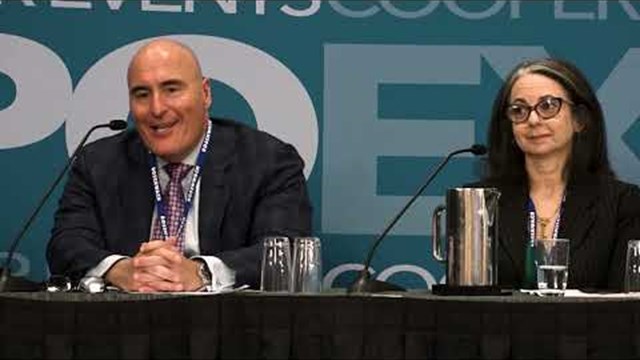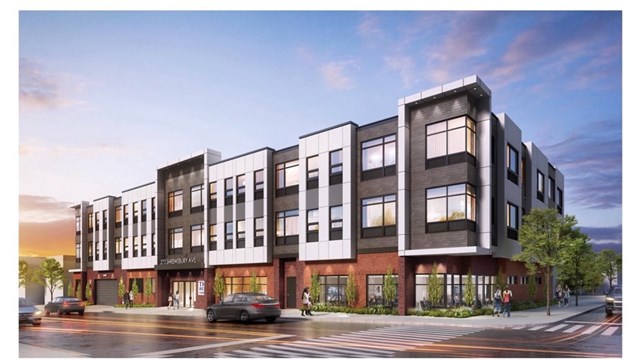Are condominiums, co-ops and HOAs cohesive communities? Is community part and parcel of what the purchaser is seeking when they buy into a co-op, condo or HOA? The concept of ‘community cohesiveness’ could be defined as a community in which there is a common vision and a sense of belonging, and where the diversity of people’s backgrounds and circumstances is appreciated and valued. A frequently-cited reason for buying a condo or co-op over a single family home is the desire to socialize. Even if that’s not toward the top of a buyer’s reasons for purchasing a unit in a multifamily building, the fact is, when you buy a co-op or condo apartment, you also buy into a community. Many factors affect community cohesiveness. A community’s size, design, environment and demographics all play a role in how tight-knit its residents are. The question is how to cultivate a sense of community and belonging among busy, often overbooked residents, and what a board-management team can do to encourage that neighborly feeling.
A Warm Welcome
Ken Graff has lived at the Edmond Lee, a 12-story, 122-unit building in the Riverdale area of the Bronx since 1982, shortly after the building was converted to a co-op. He became a board member in 2009 and serves as the board’s treasurer. While the building doesn’t have a party room, it does boast a pool and gym.
“When we first moved into the building, it wasn’t a community,” says Graff. “People weren’t cold, but it was just a building. We were still working, (Graff and his wife are now retired) and the only time we saw our neighbors was at the pool. That was the key. Slowly, over the years we got to know some people. When I joined the board, another board member suggested we try to turn the building into more of a ‘community’ – so we started a hospitality committee, which is in charge of organizing pool parties for July 4th and Labor Day, and the holiday party, which is held in the lobby. This is where people get to know each other. And everyone participates; young, old, people with children, and retirees.”
Graff adds that the hospitality committee isn’t just about event planning. “The committee’s other responsibility is when someone moves in; we visit them to welcome them and bring them a bottle of champagne — Veuve Clicquot, not the cheap stuff! It’s our way of saying welcome to the building. We also encourage the new residents to become involved in the building, and tell them about the various activities and committees. We want them to become part of the community, to participate.”
A Matter of Time
While residents both new and existing are encouraged to get involved in the Edmond Lee community, Graff says it can still be difficult to attract participants. “We can’t do anything to make someone be part of it. Most of the people who are active are retired,” he says, “as I am. When I was working, I couldn’t give the time to the building. Our board has three retirees and four working people. What we’re really hoping for is that someone with younger children will want to serve on the board, so we can get a better idea of what that group’s needs are.”
Jim Toscano, president of Property Management of Andover, located in Andover, Massachusetts, manages approximately 4,000 units across 39 sites, including both over-55 and mixed-age communities. He confirms the pattern observed by Graff. “Time is the most important component,” in resident involvement, he says. “When you’re retired, you have more time and can put more into the community. Even in mixed-use communities, the people who tend to get involved are over 55.”
Size, Amenities and Setting
Another prominent factor in community cohesion is the size of the property and type of amenities it offers. “I have lived in a 324-unit townhouse complex without a clubhouse and a HOA with fewer than 100 homes that did have a clubhouse,” says David J. Levy, owner of Sterling Services, a property management firm located in Holliston, Massachusetts. “The difference in how residents interact with each other was dramatic. Our clients with clubhouses are very social — it is a self-reinforcing circle. Those who seek a social life at their condo complex seek out a complex with a clubhouse. They volunteer more. They belong to a committee. They attend the events. On the flip-side, without a clubhouse and/or a pool, creating that sense of community is much, much harder.”
According to Marcia Caruso, CPM and the owner of Caruso Management Group, a division of RealManage located in Naperville, Illinois, suburban complexes in the Chicagoland area have a different social feel from downtown Chicago high-rises. “I have properties that have pools and clubhouses that are extremely active, and I have buildings that don’t and aren’t,” she says, echoing Levy’s experiences in Massachusetts. “The problem can be solved by forming a social committee. Those that have an active group or HOA are mostly in the suburbs. They take people golfing, they go to plays constantly. And they’re not even 55+ communities.”
As mentioned by Levy, Caruso sees a difference in community cohesiveness relative to community size, especially if the smaller communities lack a clubhouse and amenities. “The small ones — and by that I mean under 100 units — are the hardest to organize, because often there isn’t anyone who wants to give that much time and effort.”
Urban Communities
Even if their properties don’t feature clubhouses and golf courses, nearly any multifamily building or HOA can cultivate a stronger sense of connection among residents, if it wants to. Allison, an attorney, has lived in her co-op located on Manhattan’s Upper East Side for over 26 years, and served as vice president of its board for more than a decade. The 20-story building was constructed in 1962, contains 198 units, and has a gym and a backyard. They are opening a roof deck this coming spring.
“The board organizes a holiday party in the lobby and a summer party in the backyard,” says Allison, who preferred to omit her last name. “We have a community-wide sign-up for Halloween trick-or-treats.” Despite the absence of a central meeting place, Allison reports the building to be very friendly. “A few years ago I had a pretty serious medical problem. My mom came to stay with me. It happened to be at the time of the summer party, and she told some of my neighbors about my health problem. The outpouring of support was incredible. Multiple residents came up to me to share their own experiences and provide encouragement. Several residents dropped by with thoughtful gifts and food. Another example was this past year when we had a major storm. I ran into a neighbor in the gym and asked her to come over for a drink as we couldn’t go out anywhere. By 5:00 p.m., half of my floor was in my apartment with whatever they could find in their apartment to bring over to eat and drink. It was great fun!”
Nancy has lived in a co-op on Chicago’s Lake Shore Drive since 1988. In the nearly 30 years since moving into the building, she has served on various committees. Like Allison’s co-op in Manhattan, Nancy’s building hosts holiday and summer parties as well as other more spontaneous events. “By and large,” she says, “we all support each other as a community and watch over each other. We know when somebody is sick, or a parent dies, or a child is accepted to a college of their choice, and it’s supported and celebrated by neighbors.”
Over-55 Communities
Perhaps the best example of community cohesiveness is a type of property where the nature of the community itself provides common ground and interests for residents. The 55+ condominium or HOA is perhaps the most obvious example of this. Found throughout the country, these communities are designed for social activities from the get-go. They nearly always feature a clubhouse, a restaurant, pools both indoor and out, gyms, party rooms and a social director. 55+ communities might be described as the cruise ships of the condominium world.
Steve has been a resident of a large, over-55 community with more than 1,100 units located on the border of Nassau and Suffolk counties in suburban Long Island, New York, for eight years. The property, built about 13 years ago, features a clubhouse with a restaurant, gym, indoor and outdoor pools, a golf course, and more activities than one could do on any given day. Steve serves on the board, and feels that “Just walking out the door, you see people — and that’s a big component of our socialization. The other part is our activities. People have various interests, so you have someone who sets up a book club, or a chess club or a current events club. Each person has their own interests, and they share with others. That’s the beauty of community living.”
The community’s board also sets up a full roster of seasonal events; New Year’s Eve, Halloween, pool parties in the summer, happy hour almost daily. “If it’s one party that we miss, it’s not a big deal because there are so many,” says Steve. “When you live in a house you go out with a friend on New Year’s Eve. Here, 200 people show up at the clubhouse.”
Judy Clickner is the community lifestyle director at Somerset Run, a 55+ community of both single-family homes and condominiums with approximately 700 units located in Somerset, New Jersey. Here, as in many other similar communities, social life revolves around the clubhouse. “People come here because they want a social life,” she says. “About 75 percent of the residents are involved with at least one activity or committee.” Like its counterparts in other parts of the country, Somerset offers all kinds of social gatherings; New Year’s Eve and summer parties, numerous clubs, and sports activities including tennis (and pickleball, the new sport rage in over-55 communities), as well as entertainment events and trips to theater and sporting events. “We organize a Summer Olympics as well,” says Clickner. “It’s a two-and-a-half week program, with both athletic and non-athletic events so that everyone can participate. There are about 30 events over the two-and-a-half week period, ranging from tennis to mah-jongg. We even end with a closing ceremony. We are in our fifth year, and this year we added a junior division for the residents’ grandchildren. ”
Communications
The key to successful community cohesion seems to lie in effective communications. Most communities rely on a combination of tools including websites, newsletters, bulletin boards and email. Email seems to be the most commonly used means of communications at all the properties surveyed for this article. “Websites are used more for emergency situations and board meetings,” says Caruso of her Chicagoland clients. Newsletters are published at most properties two or three times a year. Steve, the board member at the over-55 community in Long Island, says he sends out several emails a month to keep the residents informed of what’s going on. Surprisingly, social media does not play a big role. Clickner from Somerset Run suggested a reason. “It’s a closed community and we don’t want this information available outside the community.”
Clearly, community cohesiveness depends on the individual community and the people in it. One thing seems certain though: many residents of these communities pick them specifically for the potential social component they offer. Developing that social component rests on a combination of efforts by board members, managers, and residents themselves. Each component is important and necessary for success. What might be the most important component? “Nothing brings out homeowners more than food and activities,” says Caruso. “That builds community.”
As enjoyable and fun as they are, feeling part of a larger community has benefits far beyond golf and New Year’s parties. Clickner, who has worked in retirement communities for over 30 years, illustrates a poignant example of this. “One gentleman moved here with his wife, who was having health issues. He said, ‘I can’t stand this — I can’t shovel my snow or cut my own lawn!’ He was really unhappy, but I told him, ‘If something happens to you, your wife is going to be taken care of, because the people here rally around. You may not know them by name, but you’ll get a card, or a message or some food delivered. They take care of their own.’ Unfortunately his wife passed and he came by later and said he owed me an apology. I asked for what? He said, ‘You told me this is the kind of place you would want to be if you lost your other half, and you were right.’ Even on his difficult days, there is always something going on. Someone gives him a call and says ‘Let’s go!’ That’s the heart of the community.”
A.J. Sidransky is a staff writer and reporter with The Cooperator.










Leave a Comment